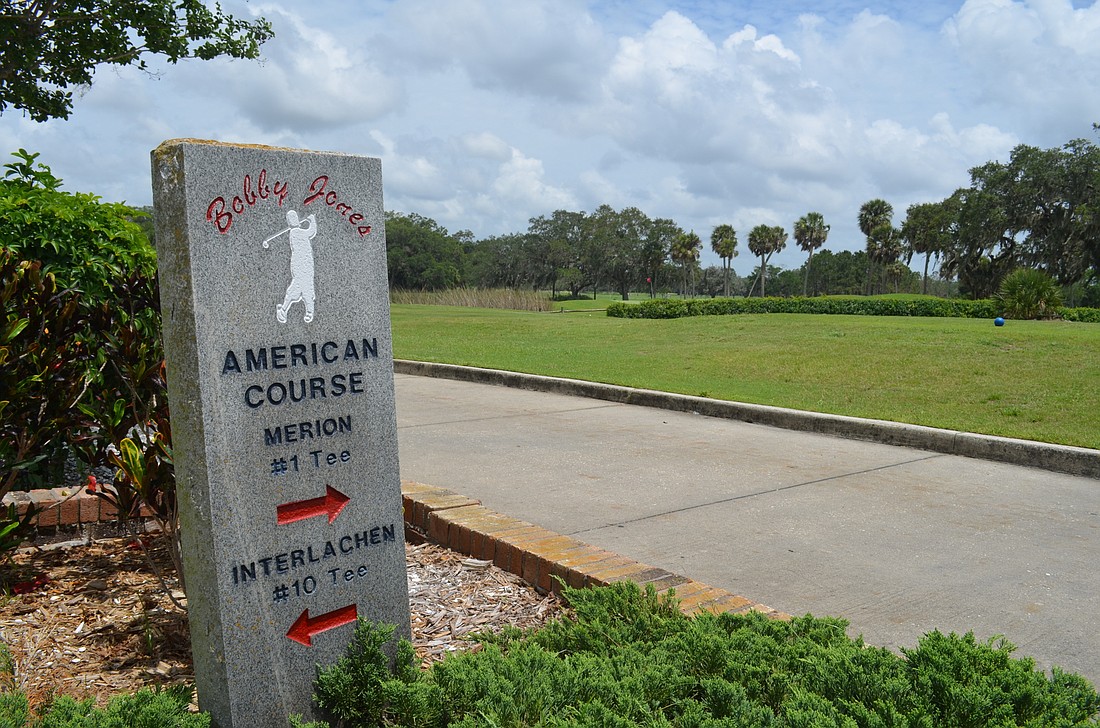- January 14, 2025
-
-
Loading

Loading

After completing 90% of the design work for a Bobby Jones Golf Club master plan, golf architect Richard Mandell’s vision for the course doesn’t involve too many radical changes — on the surface, at least.
Most of the more significant alterations he’s recommending are contained to the Gillespie Executive Course west of Circus Boulevard, which he wants to transform into a training area with a larger driving range. But on the American and British courses, Mandell wants to preserve the character of the 36 holes while improving the conditions for golfers.
In the past week, Mandell has provided a series of updates on his master plan for the city-owned facility. On Tuesday, he held a pair of workshops at Bobby Jones, where the public could provide feedback on the plans.
The city has expressed a desire to reinvigorate Bobby Jones as both revenue and the number of rounds played at the course have declined annually. In 2015, a citizen advisory committee recommended $14.5 million in improvements. In January, the city approved a $115,000 contract with Richard Mandell Golf Architecture to develop a master plan.
Mandell has affirmed one of the findings of the study committee: Bobby Jones is in need of major structural improvements. One of his priorities is improving drainage on the course, which includes adding five acres of flood control to the 325-acre site. He recommends achieving that by building ponds and dry basins that, in conjunction with raising some of the low-lying holes, is designed to redirect water away from the playing area.
Beyond the natural drainage improvements, Mandell said the course needs to be rebuilt from the ground up, for the irrigation and drainage systems at Bobby Jones have outlived their useful lifespan. He thinks infrastructure upgrades would address many complaints about the facility.
“They don’t like the drainage problems, the lack of sand in some of the bunkers,” Mandell said. “They like the general character of the golf course.”
Mandell repeatedly referred to the distinct characters of the two 18-hole courses at Bobby Jones. Golfers told him the American Course is shorter, designed for “target golf” with a lot of water throughout. The British Course, by contrast, is longer, sleepier and has relatively little water.
Within these 36 holes, he’s recommending a change that would allow staff to dynamically arrange two 18-hole courses on a day-to-day basis. Dividing them into four nine-hole segments, Mandell suggests staff could have golfers play the front nine of the American and the back nine of the British, or other combinations.
Beyond that, the changes are minor. He recommends lengthening both courses, and creating seven different tee boxes for each hole to accommodate golfers of various ability levels. He wants to make sure the holes are more clearly defined, too, for both safety and playability reasons.
The golfers at Tuesday’s workshops shared largely positive feedback. Sheila Schwabl plays at Bobby Jones twice a week, and she said the proposed changes strike a good balance between preserving what’s good about the course and making much-needed improvements to a deteriorating facility.
“It’s been a tough year for the fairways, that’s for sure,” Schwabl said.
“If you listen to what people want and try to figure out how to accommodate them, the rest of the process is a breeze.” — Richard Mandell
Mandell said he’s strived to keep the public engaged.
“If you listen to what people want and try to figure out how to accommodate them, the rest of the process is a breeze,” he said.
There’s no solid estimate on the cost or timeline of the improvements at this point. Mandell said it should take no more than a year to improve an 18-hole segment of the facility, and that any improvements would likely be conducted in phases. He said the budget figures he’d seen thrown around in the past — including the $14.5 million the committee presented — were probably “somewhat in the ballpark.”
Mandell is scheduled to present a final report to the City Commission in July. On its own, he said even a major investment won’t be enough to secure the facility’s long-term success.
“Once this is done and the shot in the arm is there, the key is for the city to stand behind it and give people the resources to keep it from slipping like it had in the past,” Mandell said.